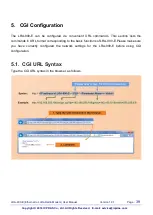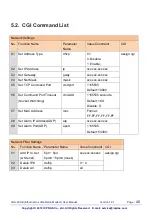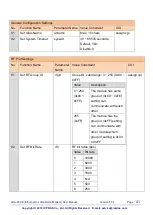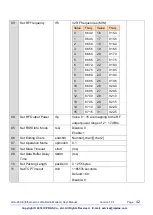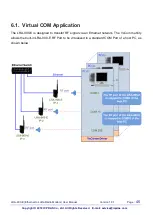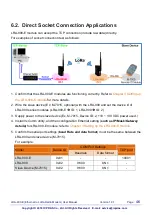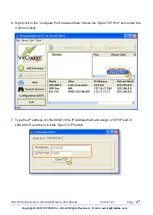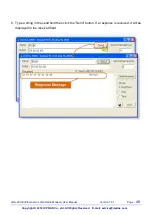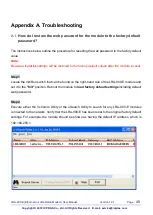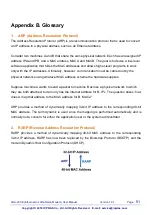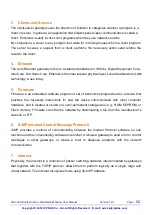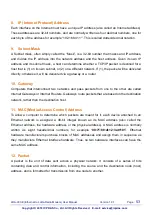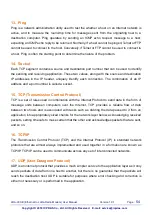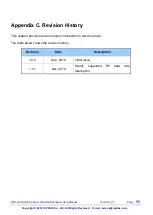
LRA-900-E (Ethernet to LoRa Radio Modem) User Manual
Version 1.0.1
Page
:
53
Copyright © 2018 ICP DAS Co., Ltd. All Rights Reserved E-mail: service@icpdas.com
8. IP (Internet Protocol) Address
Each interface on the Internet must have a unique IP address (also called an Internet address).
These addresses are 32-bit numbers, and are normally written as four decimal numbers, one for
each byte of the address for example “192.168.41.1
”
. This is called dotted-decimal notation.
9. Subnet Mask
A Subnet mask, often simply called the “Mask”, is a 32-bit number that masks and IP address,
and divides the IP address into the network address and the host address. Given its own IP
address and its subnet mask, a host can determine whether a TCP/IP packet is destined for a
host that is (1) on its own subnet, or (2) on a different network. If (1), the packet will be delivered
directly; otherwise it, will be delivered via a gateway or a router.
10. Gateway
Computers that interconnect two networks and pass packets from one to the other are called
Internet Gateways or Internet Routers. Gateways route packets that are based on the destination
network, rather than the destination host.
11. MAC (Media Access Control) Address
To allow a computer to determine which packets are meant for it, each device attached to an
Ethernet network is assigned a 48-bit integer known as its MAC address (also called the
Ethernet address, the hardware address or the physical address). A MAC address is normally
written as eight hexadecimal numbers, for example “
00:71:88:af:12:3e:0f:01
”. Ethernet
hardware manufacturers purchase blocks of MAC addresses and assign them in sequence as
they manufacture Ethernet interface hardware. Thus, no two hardware interfaces can have the
same MAC address.
12. Packet
A packet is the unit of data sent across a physical network. It consists of a series of bits
containing data and control information, including the source and the destination node (host)
address, and is formatted for transmission from one node to another.

